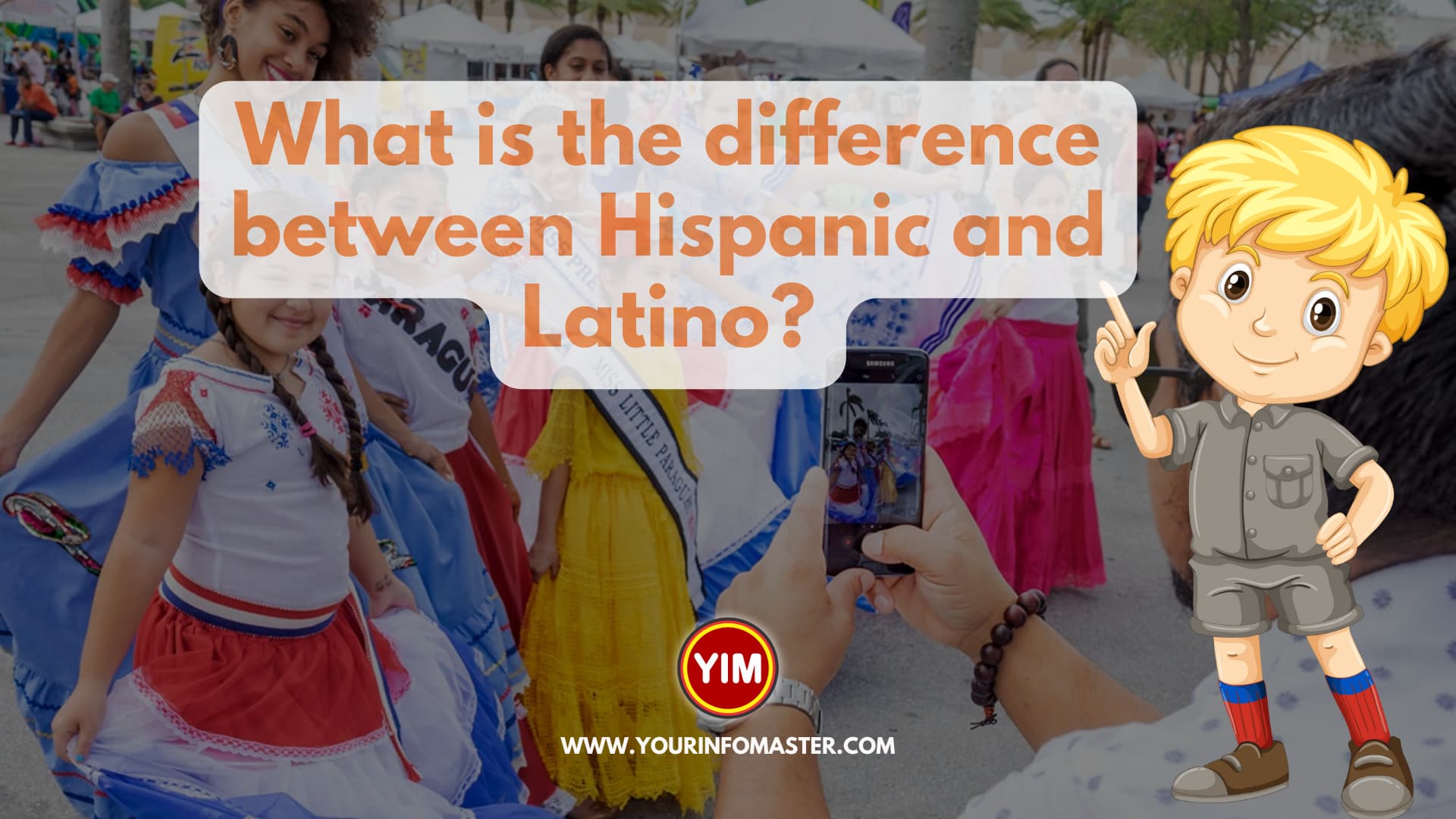I am going to explain the blog post “What is the difference between Hispanic and Latino?“
Hispanic and Latino are two terms that are often used interchangeably, but they actually have different meanings. Understanding the difference between these terms can be important in recognizing the diversity of Latin American culture and the experiences of people of Latin American descent. In this blog post, we will explore the distinctions between Hispanic and Latino, and why it is important to use these terms accurately. So, if you have ever wondered what the difference is between Hispanic and Latino, read on to learn more.
Check also: Water Intake Calculator
10 Differences between Hispanic and Latino
Here is a list of 10 differences between Hispanic and Latino:
1. Ethnicity vs. Language
While both terms are used to describe people of Latin American origin or descent, Hispanic refers to people who speak Spanish or are descended from Spanish-speaking populations, while Latino refers to people who are from, or descended from, Latin America regardless of the language spoken.
2. Origin of the Terms
The term “Hispanic” was first used by the U.S. government in the 1970s to categorize people of Spanish-speaking origin in the census. The term “Latino” originated in the 1990s as a way to include people of Latin American origin who do not necessarily speak Spanish.
3. Geographical Scope
Hispanic refers specifically to people of Spanish-speaking origin from Spain and Latin America, while Latino refers to people from all countries in Latin America, including those where Spanish is not the primary language, such as Brazil and Haiti.
4. Diversity in Ancestry
Hispanic is a more narrow term that is often associated with people of Spanish, Mexican, or Central and South American descent. Latino is a more inclusive term that encompasses people from a wider range of countries, including Brazil, Haiti, and other non-Spanish-speaking countries.
5. Cultural Differences
While Hispanic and Latino cultures share many similarities, there are also significant cultural differences between countries and regions. For example, food, music, and customs vary greatly throughout Latin America.
6. Religion
Many Latin American countries have a strong Catholic influence, but there are also significant Protestant and indigenous religious populations in many countries. Hispanic and Latino individuals may have different religious beliefs depending on their country of origin.
7. Political Identity
Many people of Latin American origin in the United States identify as Hispanic or Latino, but others may identify with a specific country or region. Some may also identify with other racial or ethnic groups.
8. Representation in Media
Hispanic and Latino representation in media and popular culture has historically been limited, and the terms have often been used interchangeably or inaccurately.
9. Education and Income
According to data from the U.S. Census Bureau, Hispanic individuals in the United States tend to have lower levels of education and income compared to the overall population, while Latino individuals have more diverse socio-economic backgrounds.
10. Identity and Self-Identification
Ultimately, how an individual chooses to identify themselves is a personal choice. While the terms Hispanic and Latino are used to describe people of Latin American origin, individuals may choose to use other terms that more accurately reflect their own identity and experiences.
Conclusion
In conclusion, understanding the differences between Hispanic and Latino is important in recognizing the diversity of Latin American culture and the experiences of people of Latin American descent. While the terms are often used interchangeably, they have distinct meanings based on ethnicity, language, geography, cultural differences, and other factors. Accurately using these terms can help us better understand the unique experiences of Hispanic and Latino individuals and communities, as well as their contributions to society. By recognizing and celebrating the diversity of Latin American culture, we can foster greater understanding, respect, and inclusivity for all.
If you really enjoyed the article “What is the difference between Hispanic and Latino?,” then I would be very grateful if you’d help it spread by emailing it to your friends or sharing it on Twitter, Instagram, or Facebook. Thank you!
Have you read “What is the difference between Hispanic and Latino?“ Which of these blogs are you reading, and how is it similar to one of them?
Read More
- What is the difference between vegan and vegetarian?
- What is the difference between Catholic and Christian?
- What is the difference between Dementia and Alzheimer’s?
- What is the difference between weather and climate?
- What is the difference between business administration and business management?
- What is the difference between ACH and EFT?
- What’s the difference between universal studios and island of adventure?
- Can you mix two different Similac formulas?
- Can I take classes at two different colleges?
- What is the main difference between structured and unstructured data?
- What’s the difference between civil and criminal law?
- Can you share YouTube TV in different houses?
- What’s the difference between peacock and peacock premium?
- How is Aleve back and muscle different from regular Aleve?
- What is the difference between AAA and AAA plus?
- What is the difference between affect and effect?
- What is the difference between mass and weight?
- What is the difference between medicare and medicaid?







